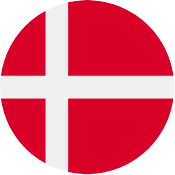
German Sentence Structure Made Easy: Tips For Every Language Level
Trying to comprehend German sentence structure – or syntax – can feel like navigating a maze blindfolded, especially if your native language is English. This is because German grammar rules about word order are more complex than English rules, causing confusion for those unaccustomed to the wide variety of syntactical arrangements. For example, the simple sentence, “She goes to the cinema today,” can be translated as: “Sie geht heute ins Kino,” “Heute geht sie ins Kino,” or “Ins Kino geht sie heute.” A bit perplexing, right?

But don’t let that discourage you from learning this fascinating language! With a little patience, practice, and the right learning strategies, you’ll soon get the hang of this critical aspect of German. To help you get there, we’ve put together this comprehensive guide to German sentence structure, covering tips and strategies for every language level.
The basics: German sentence structure for beginners
As the word order in German depends, among other things, on the sentence type, we’ll start by examining some common sentence structures and their respective syntax rules for a clearer understanding.
Declarative sentence structure
The most basic sentence type found in German – declarative sentences – doesn’t differ from its English counterpart, the Subject–Verb (–Object) construction. Here are three basic German sentences in the declarative form, with their English translation.
| Subject | Verb | Object | Translation |
| Er | schläft. | He sleeps. | |
| Er | trinkt | den Kaffee. | He drinks the coffee. |
| Sie | kauft | ein Buch. | She buys a book. |
Sentences with two objects
But what happens to this word order if we specify the recipient of the direct object? We need to add an indirect object to the sentence, following the rule: indirect object before direct object. Let’s look at the last sentence again:
| Subject | Verb | Indirect object | Direct object | Translation |
| Sie | kauft | ihm | ein Buch. | She buys him a book. |
Note that the indirect object, ihr Freund (her friend), has been replaced with the indirect pronoun, ihm (him), in this sentence. If you want to learn more about this grammatical phenomenon, read our guide on German pronouns.
Sentences with negation
The two most commonly used German negation words, nicht (not) and kein (no/none), both require special attention in terms of word order. Although their position in a sentence can be the same, which one you use depends on other factors, such as the verb type and sentence type. A negative declarative sentence, for instance, has nicht placed directly after the conjugated verb, but if you add an adverbial phrase to the sentence, it can be inserted between the verb and negation.
| Subject | Verb | Object | Adverb (Time) | Adverb (Place) | Translation |
| Wir | gehen nicht | ins Kino. | We don’t go to the cinema. | ||
| Wir | gehen | heute nicht | ins Kino. | We won’t go to the cinema today. | |
| Wir | haben | keine Zeit | We don’t have time. |
As you can see, another difference between English and German word order can be found in the placement of time and place adverbs. While it’s place before time in English, it can also be the other way around in German.
Sentence structure in a question
Basic questions don’t include a question word. Like English, the word order for these types of questions is inverted, and the verb is placed at the beginning. In compound tenses like Present Perfect, the conjugated verb comes first, followed by the subject, with the second part of the verb at the end. And question pronouns like wo (where), was (what), and wann (when) are always placed at the start.
For example:
- Ist er angekommen? (Has he arrived?)
- Haben Sie das Buch gelesen? (Have you read the book?)
- Was hast du heute gemacht? (What have you done today?)
Intermediate tips: 4 German syntax patterns
A common mistake among intermediate learners is confusing four distinct sentence patterns, so let’s take a look at them.
- Standard structure: Follows the Subject-Verb-More Nouns-More Verbs format, where the subject and verb are positioned at the beginning of the sentence, followed by additional nouns and verbs.
Example: Ich hätte meinen Vater vom Bahnhof abgeholt. (I would have picked up my
dad from the train station).
- Inverted structure: Swaps the Subject and Verb, primarily for yes/no questions. This pattern changes the order of the subject and verb, making the verb the leading element in the sentence.
Example: Spielst du Gitarre? (Do you play the guitar?)
- Transposed structure: Shifts the more-nouns element to the beginning for emphasis. This pattern highlights a specific element within the sentence by placing it at the forefront while maintaining the original meaning.
Example: Meinen Vater hätte ich vom Bahnhof abgeholt. (My father, I would have picked up from the train station).
- Subordinated structure: Starts with a subordinating conjunction or relative pronoun, placing the conjugated verb at the end of the clause. This pattern introduces more complex clauses and highlights the relationship between different parts of the sentence.
Example: Ich weiß nicht, wo er heute arbeitet. (I don’t know where he works today).
Advanced tips: Special verb cases
And for advanced learners of German, several exceptional cases further complicate word order. Let’s focus on the most crucial element – the verb.
Sentences with auxiliary verbs
Auxiliary verbs in German help the main verb express tense, mood, and voice. Common auxiliary verbs are haben (to have), sein (to be), and werden (to become or will). In a sentence, the auxiliary verb is conjugated, taking the second position, while the main verb is either in its infinitive or past participle form at the end. Understanding the role of auxiliary verbs is crucial to forming more complex sentences in German.
For example:
- Positive statement: Ich werde morgen ein Flugticket buchen. (I will book a plane ticket tomorrow.)
- Negative statement: Wir haben die ganze Nacht nicht geschlafen. (We haven’t slept all night.)
- Question: Hat sie das Project schon beendet? (Has she completed the project yet?)
Sentences with modal verbs
Similar to auxiliary verbs, German modal verbs take the second position in a sentence. They express the modality of the speakers toward the main verb (e.g., in the sense of necessity, desire, or ability) and include verbs like dürfen (to be allowed to), können (to be able to), and müssen (to have to). They, too, are conjugated, taking the second position in the sentence, with the main verb remaining in its infinitive form at the end of the sentence.
Key examples include:
- Positive statement: Wir müssen die Präsentation vorbereiten. (We have to prepare the presentation.)
- Negative statement: Du hättest diesen Weg nicht kreuzen sollen. (You shouldn’t have crossed that path.)
- Negative question: Kann er dir nicht helfen? (Can’t he help you?)
Sentences with separable verbs
Finally, separable verbs in German have prefixes that can be detached and placed elsewhere in the sentence. Common prefixes include ab-, vor-, zu-, auf-, ein-, and zurück-. The conjugated main part of the verb follows the subject, while the prefix is positioned at the end of the sentence. As a consequence, the verb order can look confusing to non-native speakers.
For example:
- Positive statement: Ich gebe dir das Buch zurück. (I’m giving the book back to you).
- Negative statement: Wann stehst du morgens auf? (When do you get up in the morning?)
- Question: Wie stellst du dir deine Zukunft vor? (How do you envision your future?)
Sign up for our offers
Exclusive discounts on your course with Cactus directly on your inbox!
Enhance Your German Sentence Structure Skills with Cactus
Need more guidance to navigate German sentence structure with confidence and ease? No problem! Cactus online courses are here to help you every step of the way. Learn from qualified, native-speaking German teachers, and improve your German skills in a fun and interactive environment.
Or, if you’re based in England and prefer in-person learning, Cactus also offers German courses in London, Manchester and Brighton. Taught by experienced German teachers, our in-person classes provide an engaging and interactive way to develop your language skills. With a focus on speaking and communication, you’ll gain confidence in your German from the very first class.
Take your German to the next level by booking a German Language Holiday with Cactus. Study in a range of German cities from a native speaker and fully immerse yourself in the city as you learn. These holidays offer you the perfect opportunity to practice your newly found skills in everyday surroundings.
Ready to Start Learning?
About the Author

Dr. Anneke Schmidt is the founder of Skill & Care Content Solutions. She is an experienced content writer, editor, and educator with a demonstrated history of working in the research industry. Her main specialisms are Social Sciences and Education, with a particular focus on e-learning and professional development.

 French
French German
German Italian
Italian Spanish
Spanish Arabic
Arabic Cantonese
Cantonese Czech
Czech Croatian
Croatian Danish
Danish Dutch
Dutch English
English Greek
Greek Hebrew
Hebrew Hindi
Hindi Japanese
Japanese Korean
Korean Norwegian
Norwegian Polish
Polish Portuguese
Portuguese Russian
Russian Swedish
Swedish Thai
Thai Turkish
Turkish Ukrainian
Ukrainian